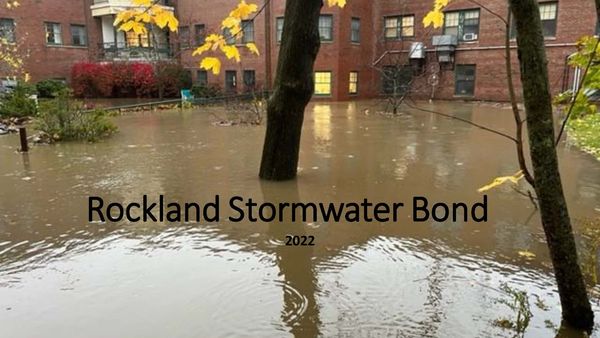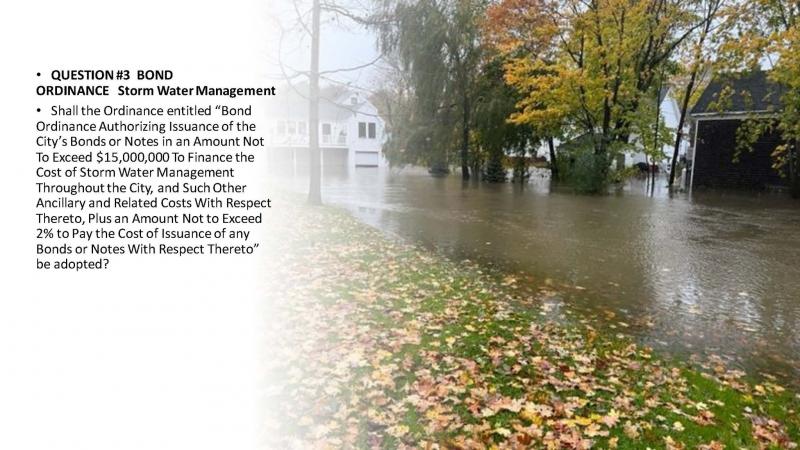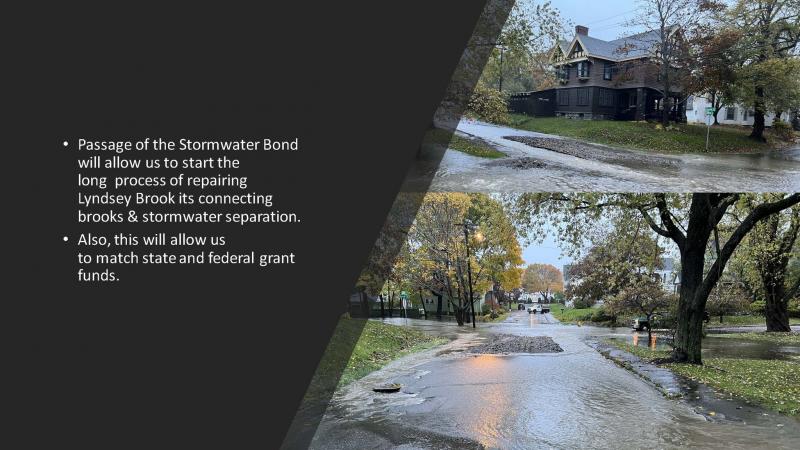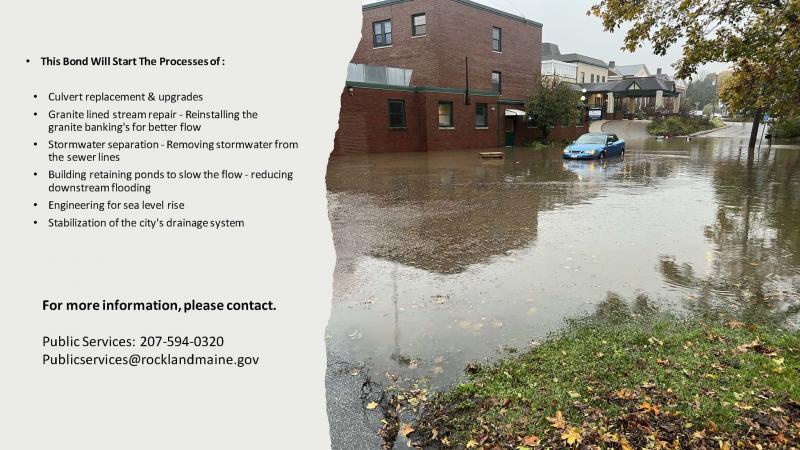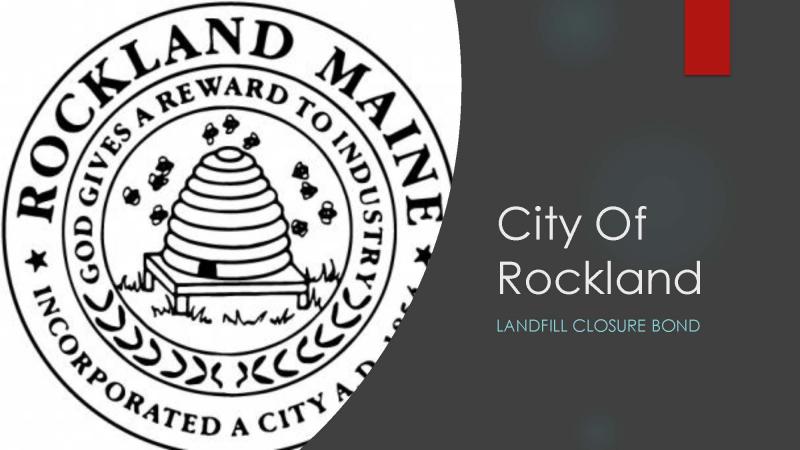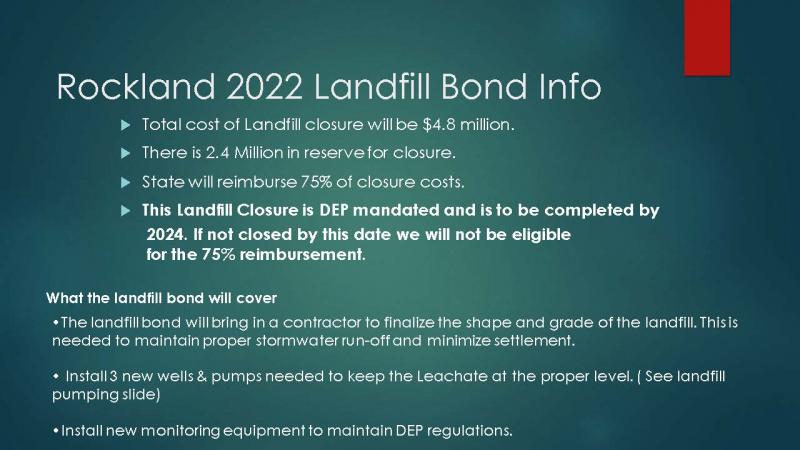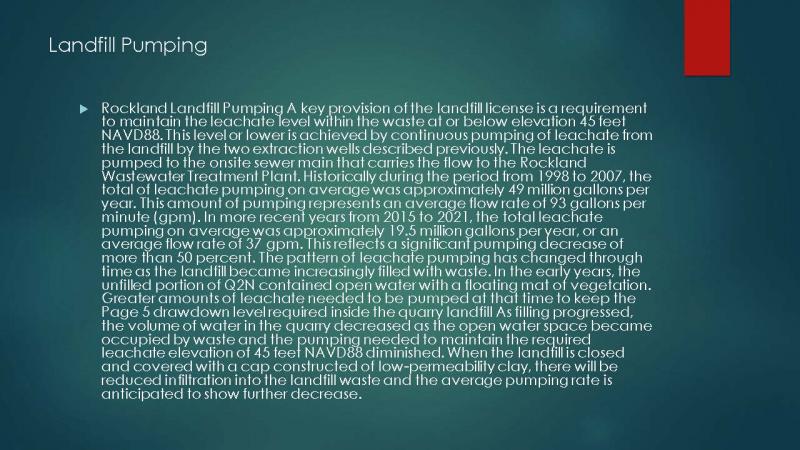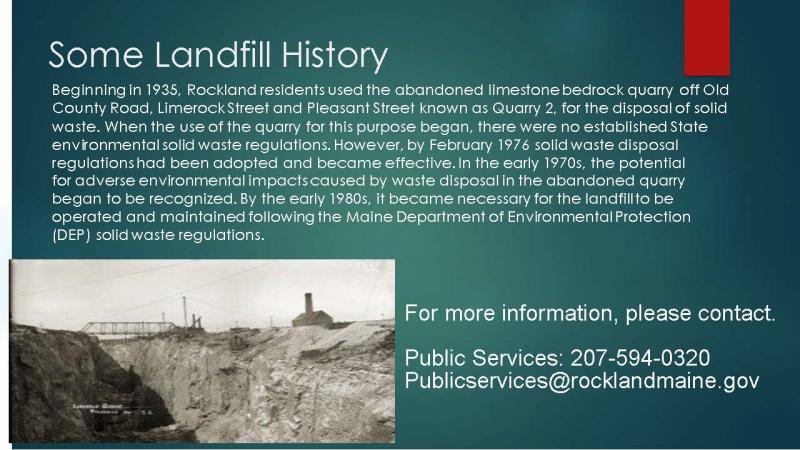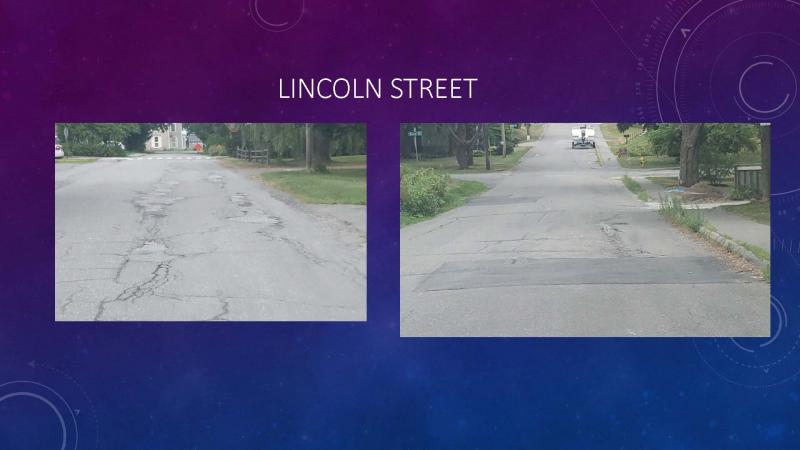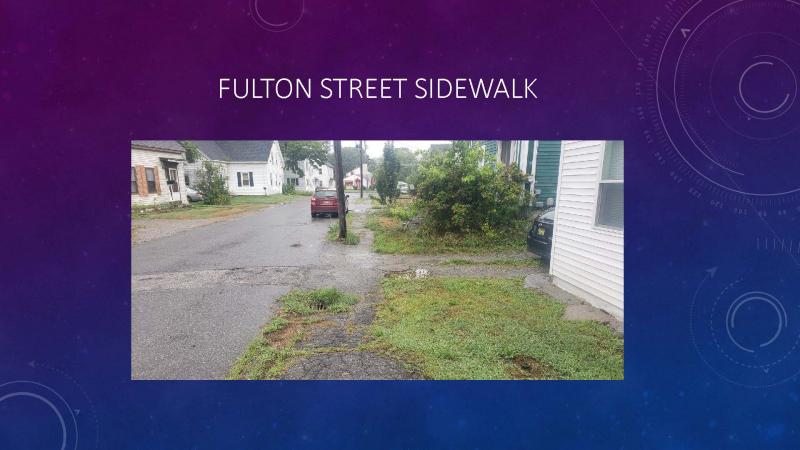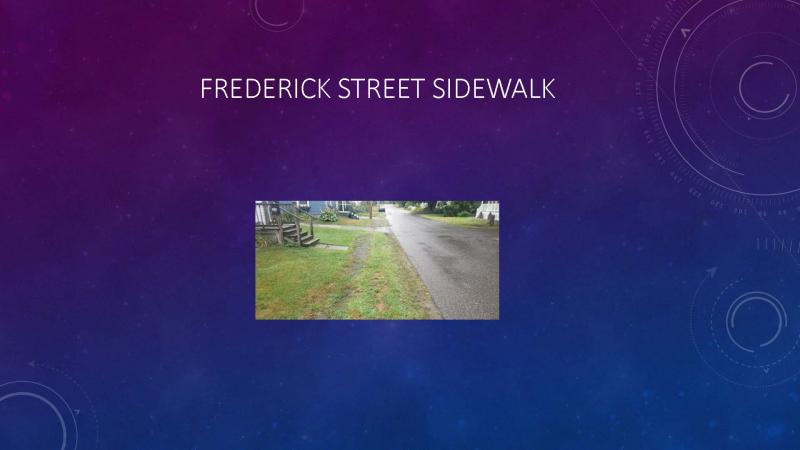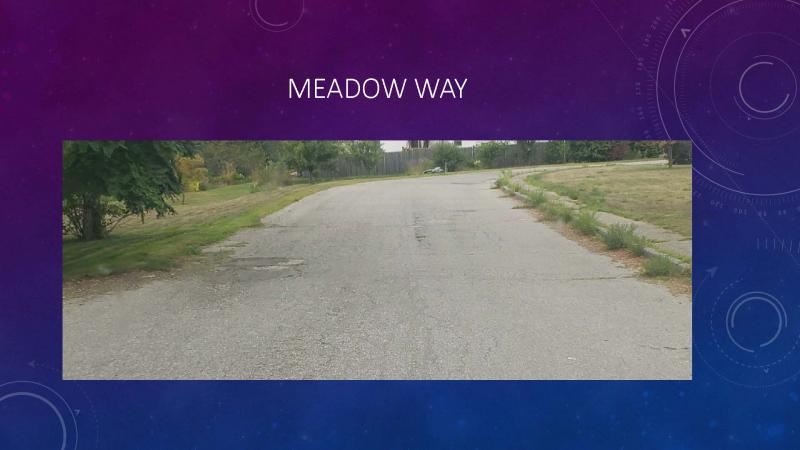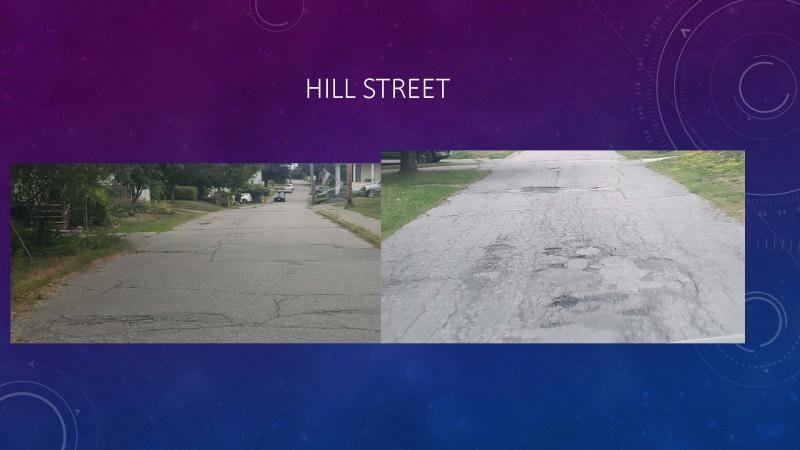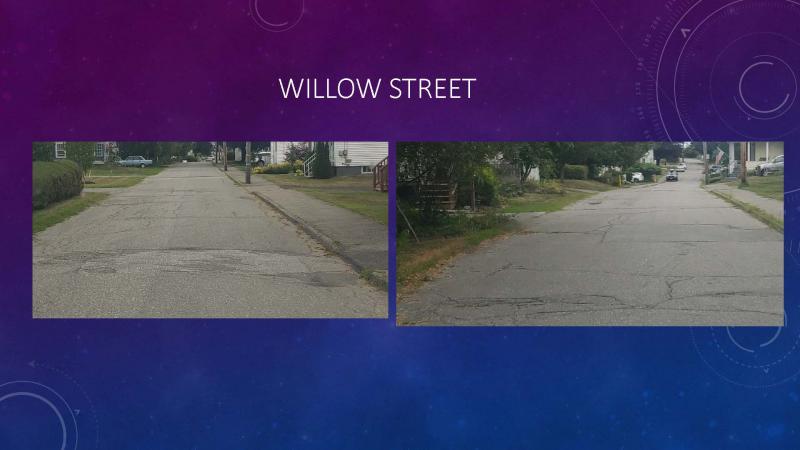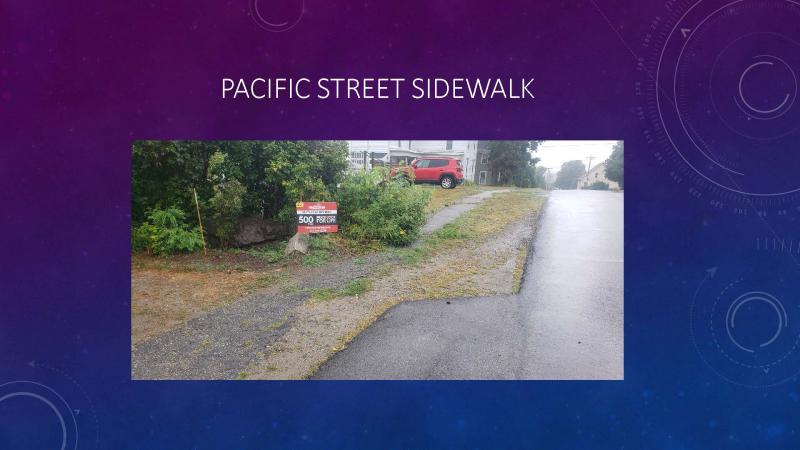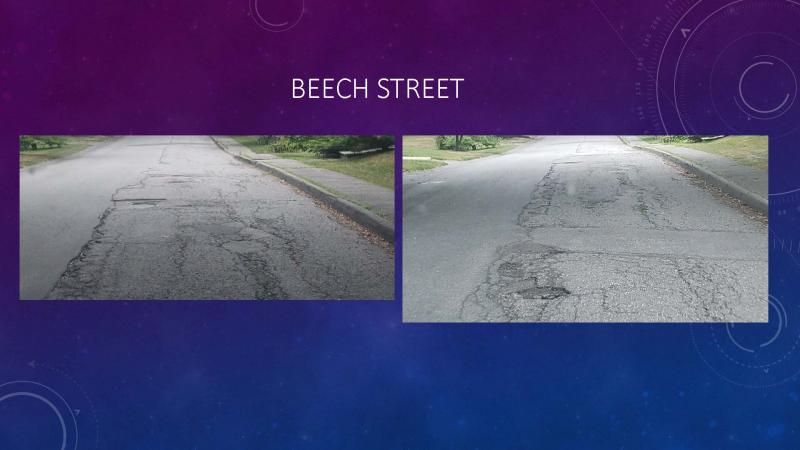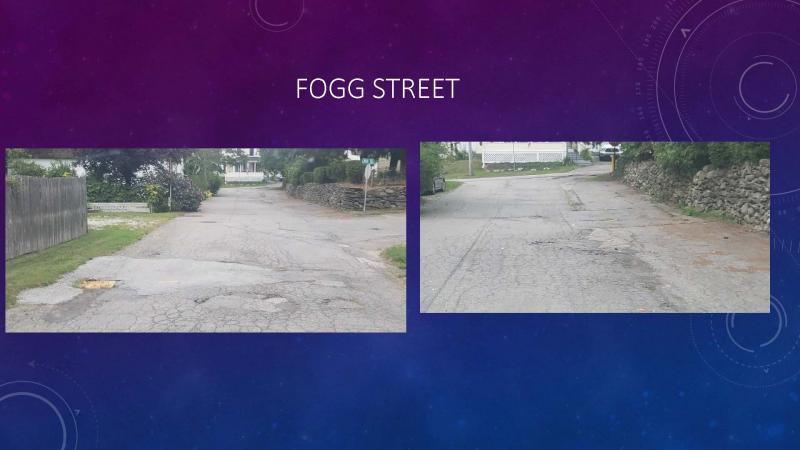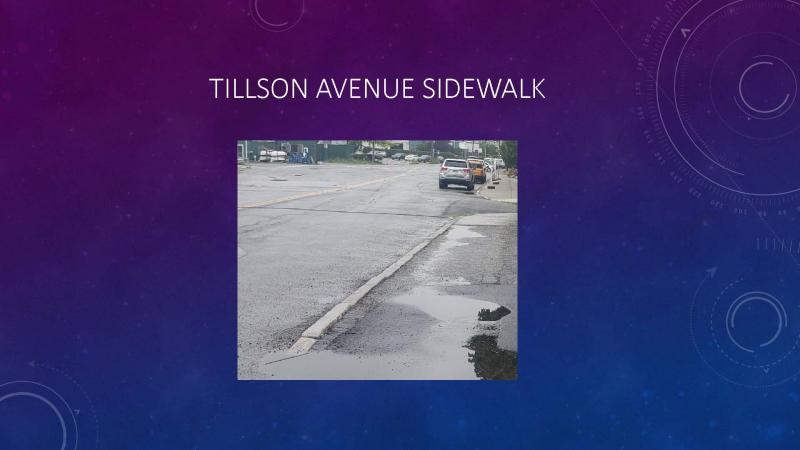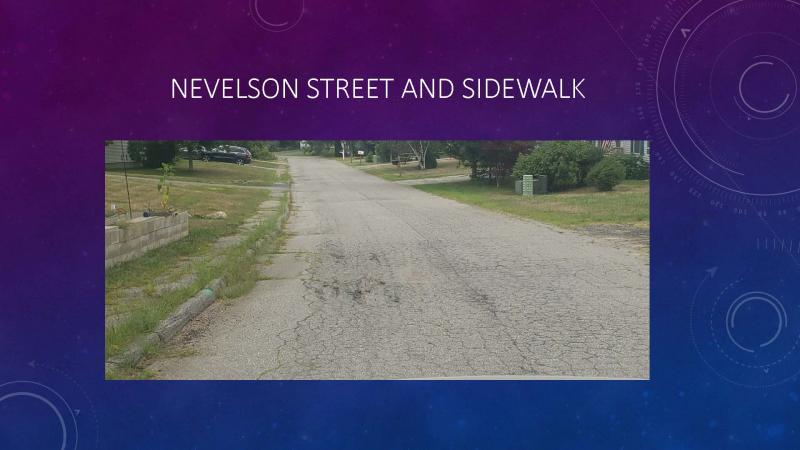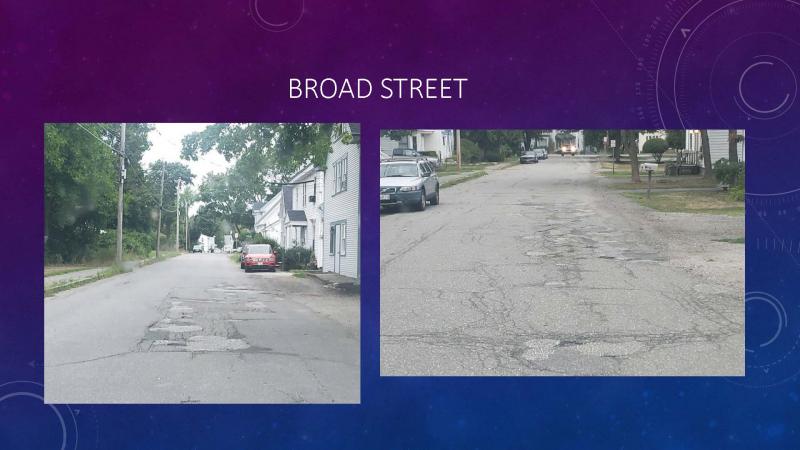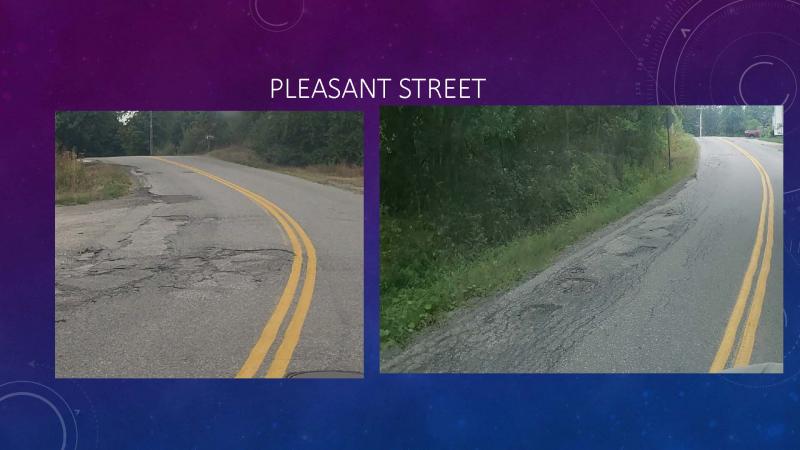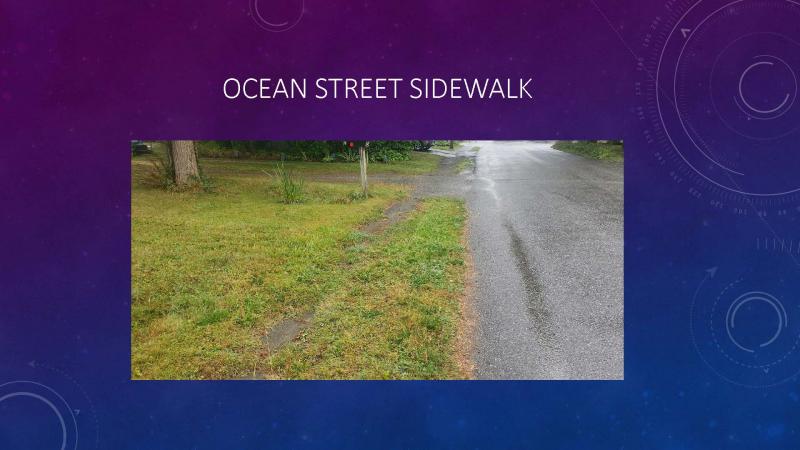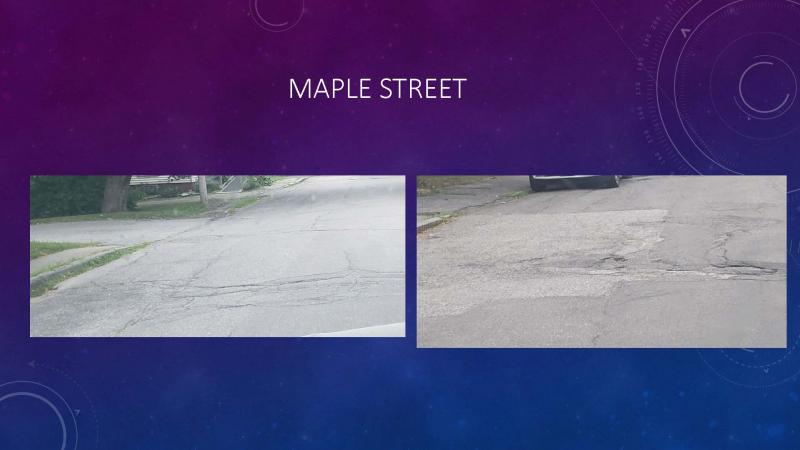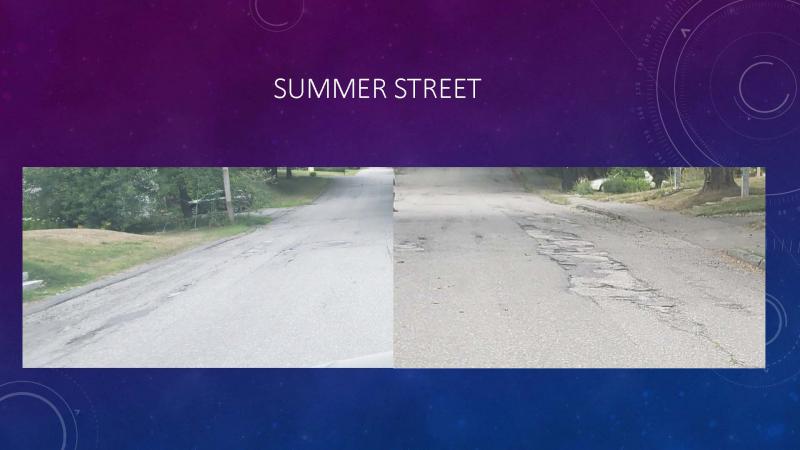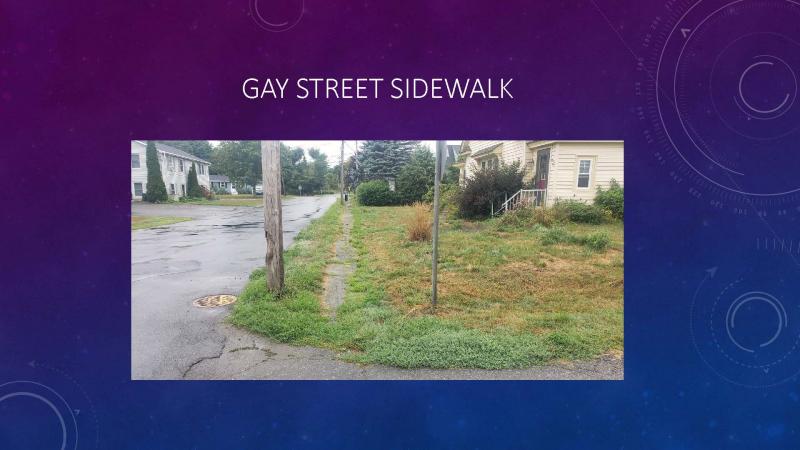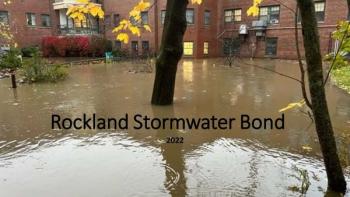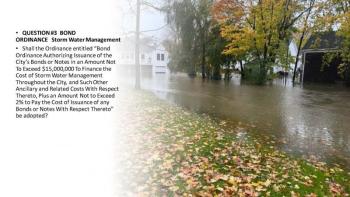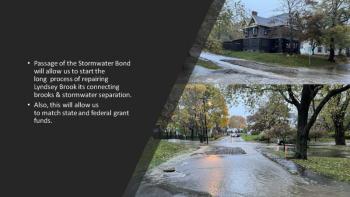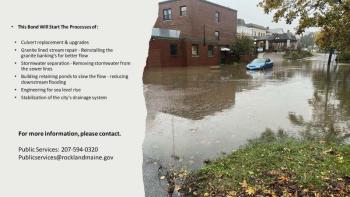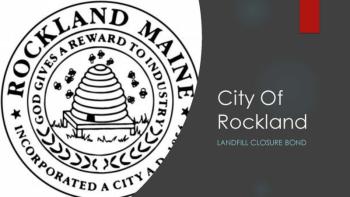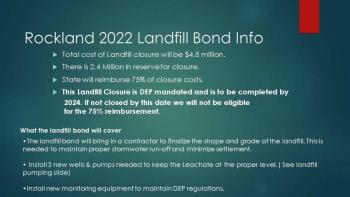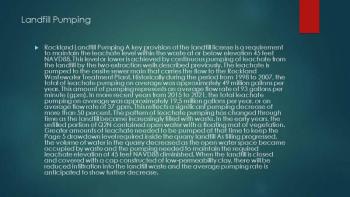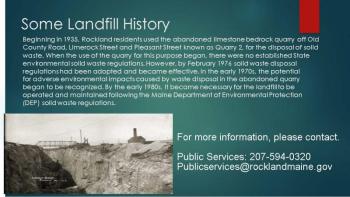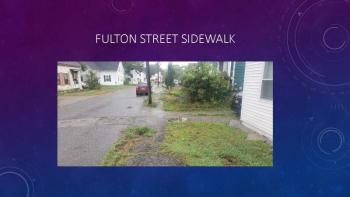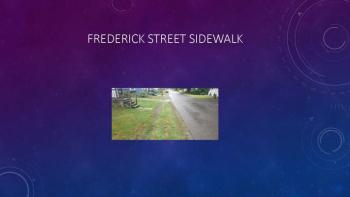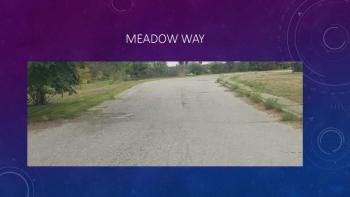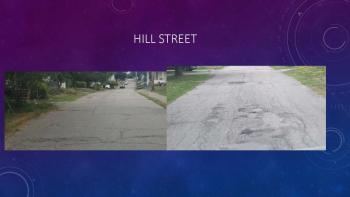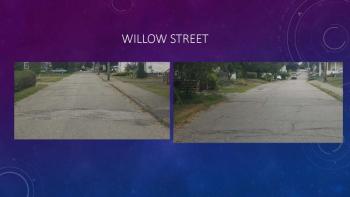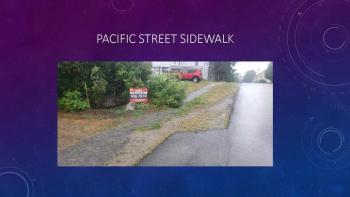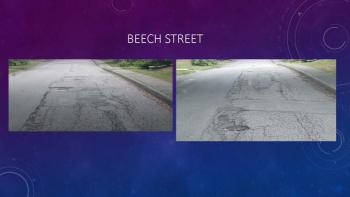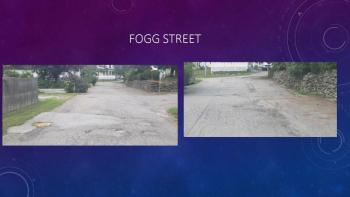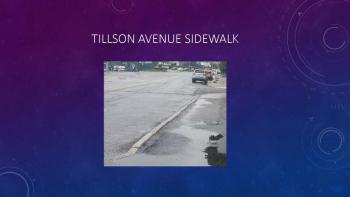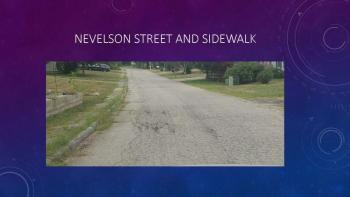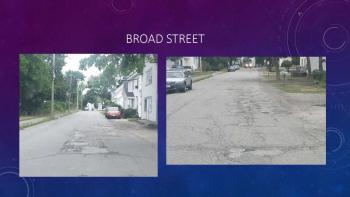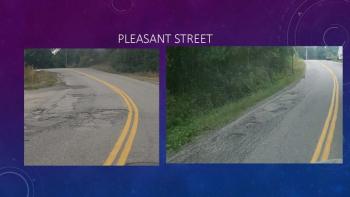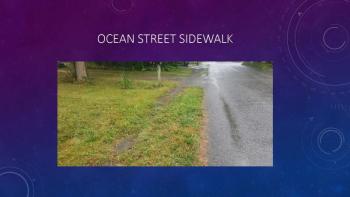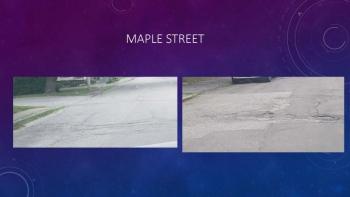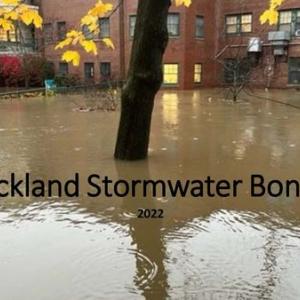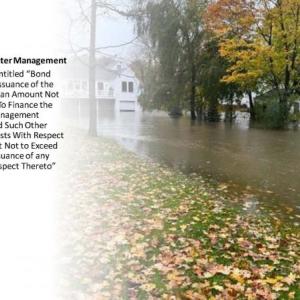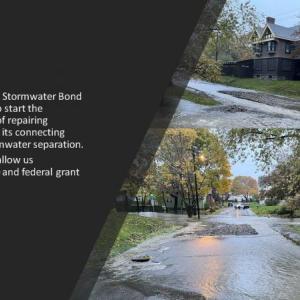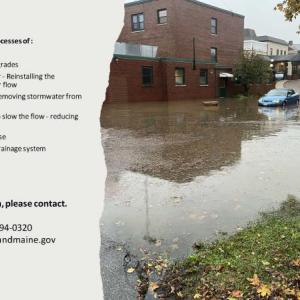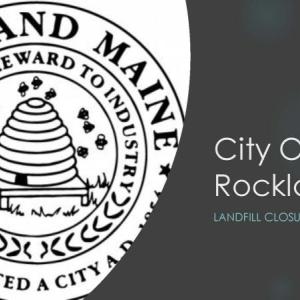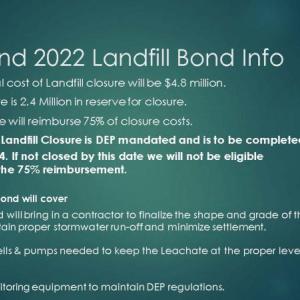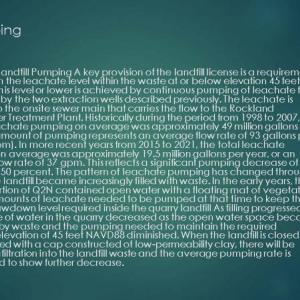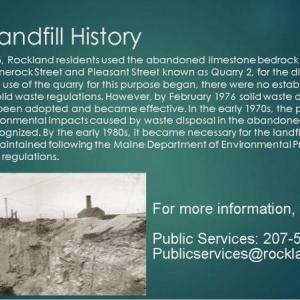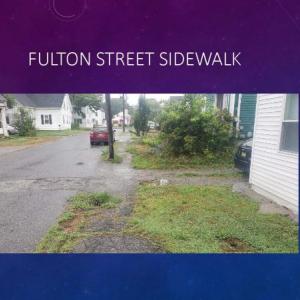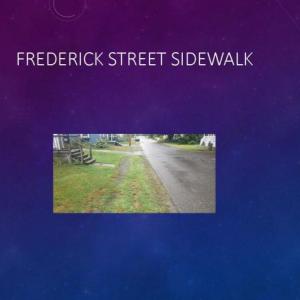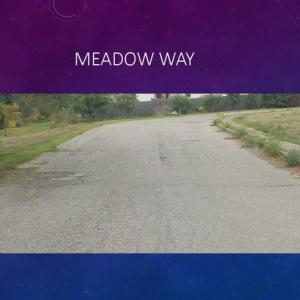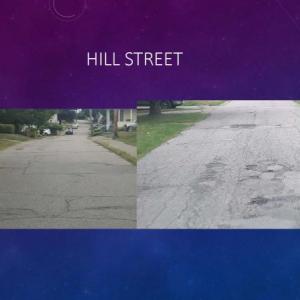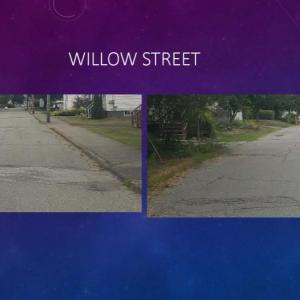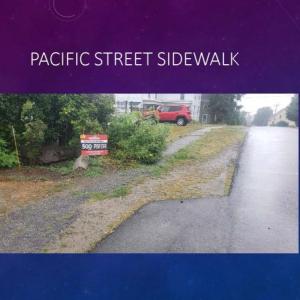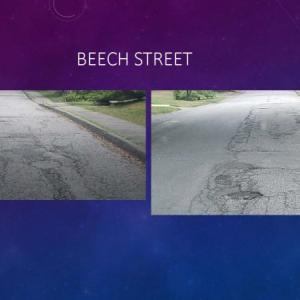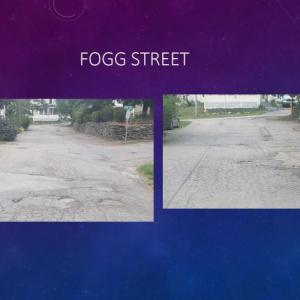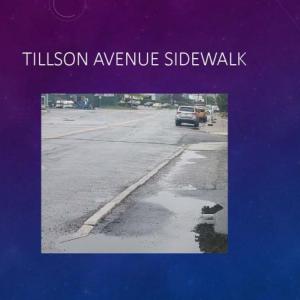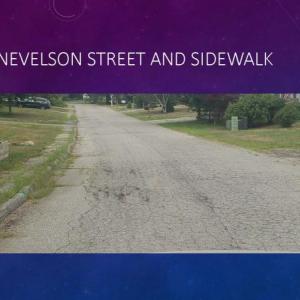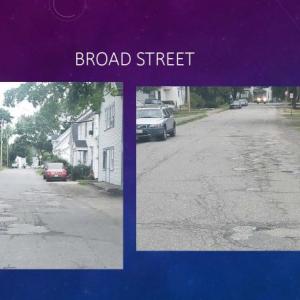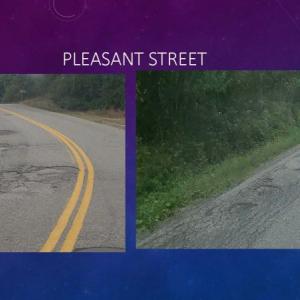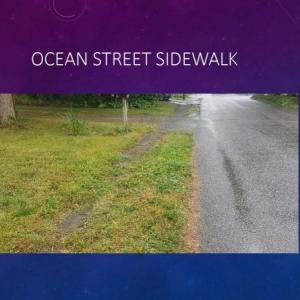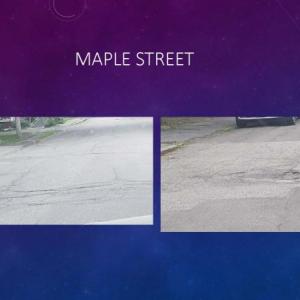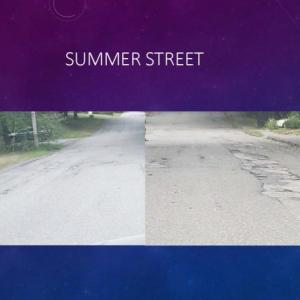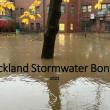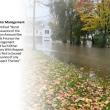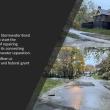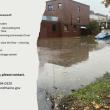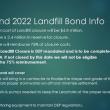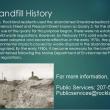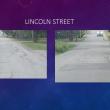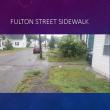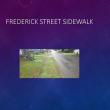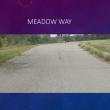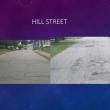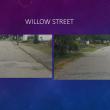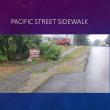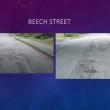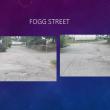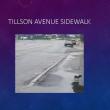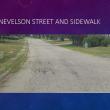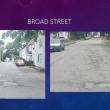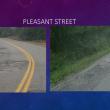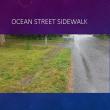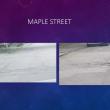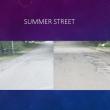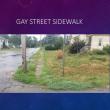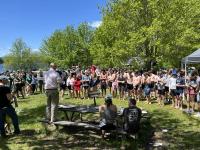Rockland residents to ponder bond questions in November: stormwater, paving, landfill
Rockland Public Services has outlined three bond questions that will appear on the November 2022 City ballot. The three bond questions address issues with Storm Water Management, Landfill, and Paving.
Storm Water Management
Shall the Ordinance entitled “Bond Ordinance Authorizing Issuance of the City’s Bonds or Notes in an Amount Not To Exceed $15,000,000 To Finance the Cost of Storm Water Management Throughout the City, and Such Other Ancillary and Related Costs With Respect Thereto, Plus an Amount Not to Exceed 2% to Pay the Cost of Issuance of any Bonds or Notes With Respect Thereto” be adopted?
• Passage of the Stormwater Bond will allow us to start the long process of repairing Lyndsey Brook its connecting brooks & stormwater separation.
• Also, this will allow us to match state and federal grant funds.
This Bond Will Start The Processes of :
• Culvert replacement & upgrades
• Granite lined stream repair - Reinstalling the granite banking's for better flow
• Stormwater separation - Removing stormwater from the sewer lines
• Building retaining ponds to slow the flow - reducing downstream flooding
• Engineering for sea level rise
• Stabilization of the city's drainage system
Rockland 2022 Landfill Bond Info
Total cost of Landfill closure will be $4.8 million.
There is 2.4 Million in reserve for closure.
State will reimburse 75% of closure costs.
This Landfill Closure is DEP mandated and is to be completed by 2024. If not closed by this date we will not be eligible for the 75% reimbursement.
What the landfill bond will cover
• The landfill bond will bring in a contractor to finalize the shape and grade of the landfill. This is needed to maintain proper stormwater run-off and minimize settlement.
• Install 3 new wells & pumps needed to keep the Leachate at the proper level. ( See landfill pumping slide)
• Install new monitoring equipment to maintain DEP regulations.
Landfill Pumping
Rockland Landfill Pumping A key provision of the landfill license is a requirement to maintain the leachate level within the waste at or below elevation 45 feet NAVD88. This level or lower is achieved by continuous pumping of leachate from the landfill by the two extraction wells described previously. The leachate is pumped to the onsite sewer main that carries the flow to the Rockland Wastewater Treatment Plant. Historically during the period from 1998 to 2007, the total of leachate pumping on average was approximately 49 million gallons per year. This amount of pumping represents an average flow rate of 93 gallons per minute (gpm).
In more recent years from 2015 to 2021, the total leachate pumping on average was approximately 19.5 million gallons per year, or an average flow rate of 37 gpm. This reflects a significant pumping decrease of more than 50 percent. The pattern of leachate pumping has changed through time as the landfill became increasingly filled with waste. In the early years, the unfilled portion of Q2N contained open water with a floating mat of vegetation.
Greater amounts of leachate needed to be pumped at that time to keep the Page 5 drawdown level required inside the quarry landfill As filling progressed, the volume of water in the quarry decreased as the open water space became occupied by waste and the pumping needed to maintain the required leachate elevation of 45 feet NAVD88 diminished. When the landfill is closed and covered with a cap constructed of low-permeability clay, there will be reduced infiltration into the landfill waste and the average pumping rate is anticipated to show further decrease.
Some Landfill History
Beginning in 1935, Rockland residents used the abandoned limestone bedrock quarry off Old County Road, Limerock Street and Pleasant Street known as Quarry 2, for the disposal of solid waste. When the use of the quarry for this purpose began, there were no established State environmental solid waste regulations. However, by February 1976 solid waste disposal regulations had been adopted and became effective. In the early 1970s, the potential for adverse environmental impacts caused by waste disposal in the abandoned quarry began to be recognized. By the early 1980s, it became necessary for the landfill to be operated and maintained following the Maine Department of Environmental Protection (DEP) solid waste regulations.
2022 STREET & SIDEWALK PAVING BOND
• The Street & Sidewalk paving bond aims to provide Rockland residents and businesses with safe, drive-able roadway surfaces by resurfacing deteriorated streets and sidewalks.
• The City’s annual Street Maintenance Improvement Program consists of three major categories:
Preventive maintenance (Crackfilling, Coldpatching, Ditching and Culvert Replacement)
Street Resurfacing
Street Reconstruction
• Each year, the City staff evaluates its street and selects cost-effective maintenance treatments to enhance and extend the useful life of the pavement. When a pavement has deteriorated beyond the point of preventive maintenance and resurfacing, the street will be reconstructed.
• The annual budgeted amount doesn’t cover nearly enough of the 58 miles of roadway and 25 miles of sidewalk for us to maintain them. This bond is crucial in getting us to a point where our annual budget will maintain our roads. Also the bond will allow us to look at Complete Streets making our city safer for pedestrians, bicyclists and vehicles. We will also be adding new sidewalks where needed.
• Also this bond will allow us to match funds to repair state roads within the city. See info on MPI Grants https://www.maine.gov/mdot/pga/cbi
• The longer we put it off the more it will cost!
PAVING BOND GOALS
The goal of this Bond is to resurface the pavement surface and repair the failing infrastructure in the public right-of-way. City Wide. This includes roads & sidewalks. To accomplish this, deteriorated curbing, sidewalks and failing storm drain/sewer structures on your street will be removed and replaced before the street is resurfaced. Public Services will evaluate the road surface and sidewalk in front of your home to determine what the best practice is in repairing.
These practices will be:
• Overlay - An overlay, as its name implies, is simply a new pavement section (generally 1.5′′ – 2′′ thick) placed over the top of an existing pavement surface.
• Mill - Milling is the process of removing the top layer of asphalt to a specified and even depth without disturbing the underlying subbase. This allows new asphalt to be laid down without increasing the height of the road and saves you time if the subbase doesn't need to be fixed.
• Full Depth Reclaim – Also known as asphalt pulverization, full-depth reclamation is a construction rehabilitation technique of removing the distressed layer of existing asphalt, blending it with the existing stone base, and creating a recycled usable base for the new asphalt.
See photos for the following 17 paving issue locations that have been identified.
PLEASANT STREET
BROAD STREET
FREDERICK STREET SIDEWALK
LINCOLN STREET
SUMMER STREET
MAPLE STREET
OCEAN STREET SIDEWALK
BEECH STREET
PACIFIC STREET SIDEWALK
WILLOW STREET
HILL STREET
FULTON STREET SIDEWALK
MEADOW WAY
NEVELSON STREET AND SIDEWALK
TILLSON AVENUE SIDEWALK
FOGG STREET
GAY STREET SIDEWALK
For more information, please contact
Public Services: 207-594-0320
Publicservices@rocklandmaine.gov

